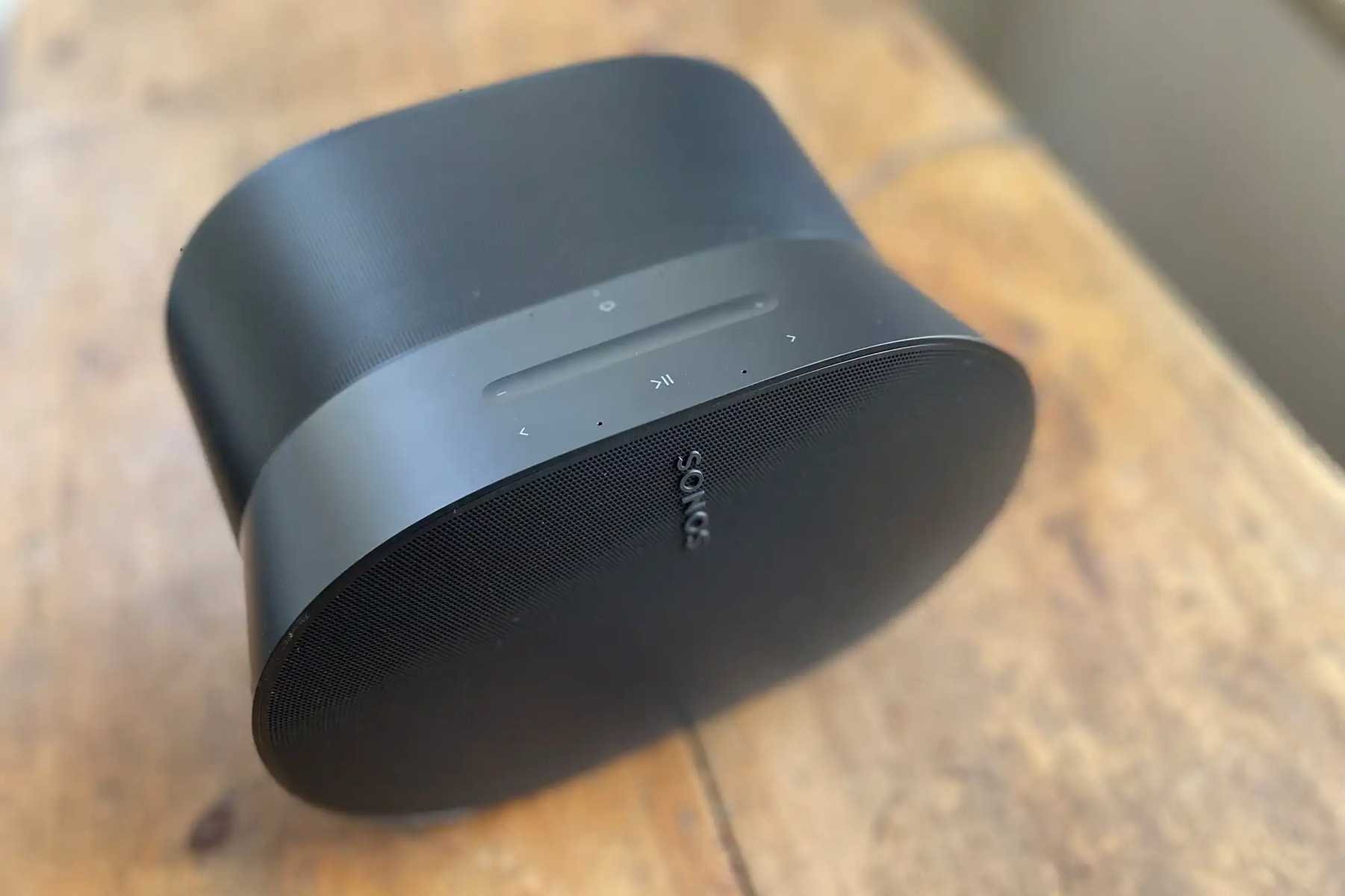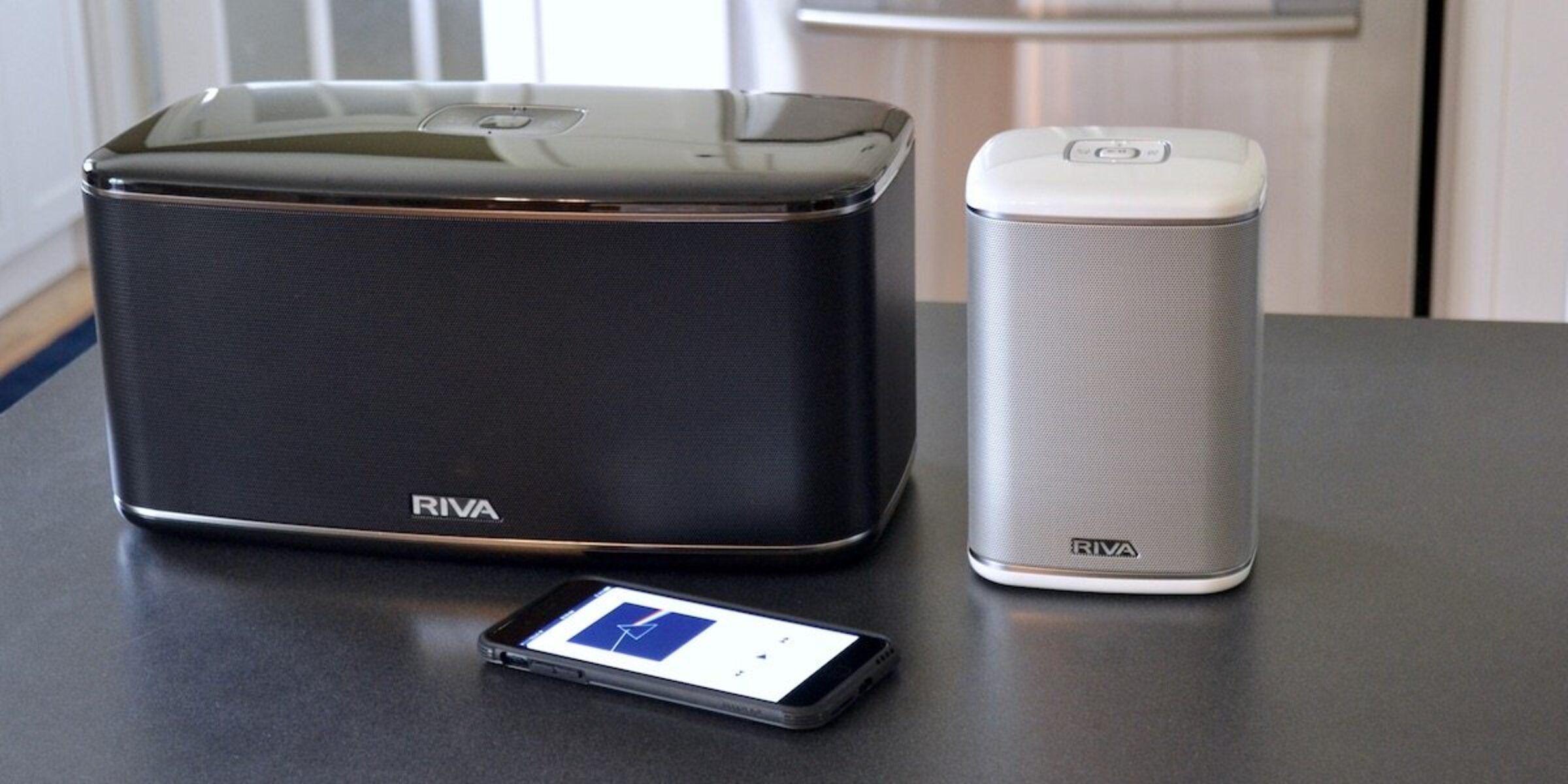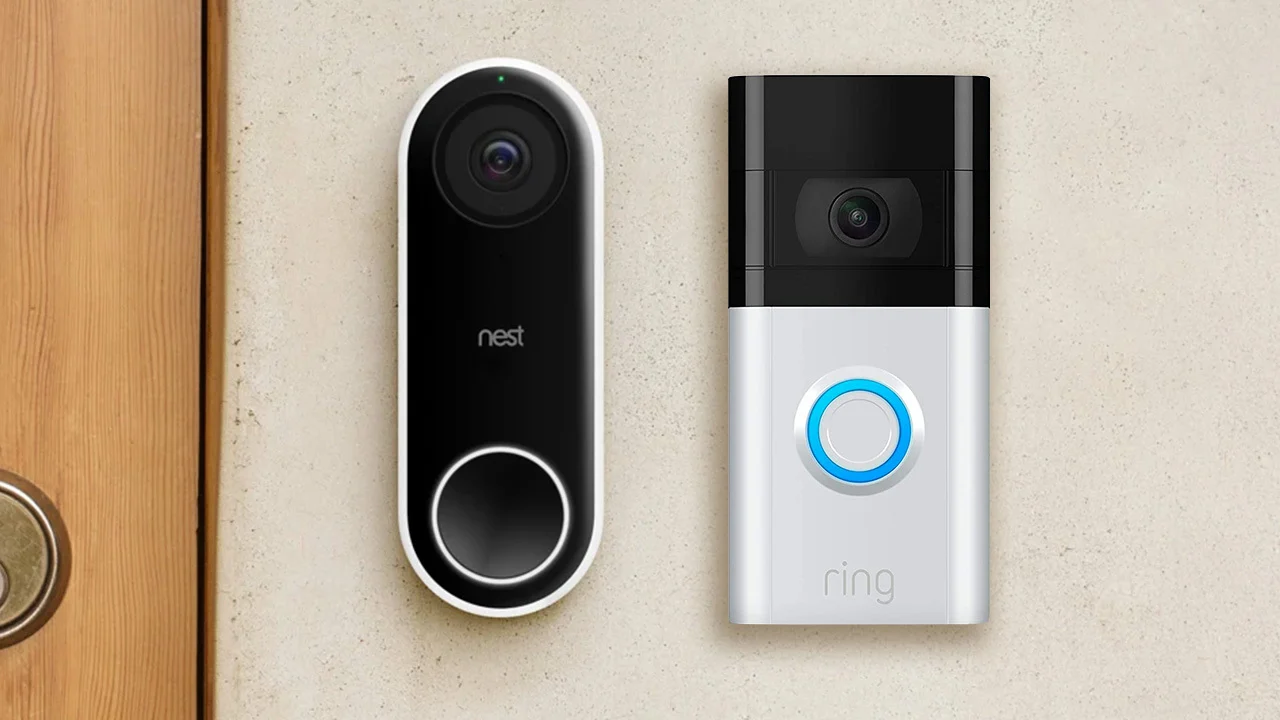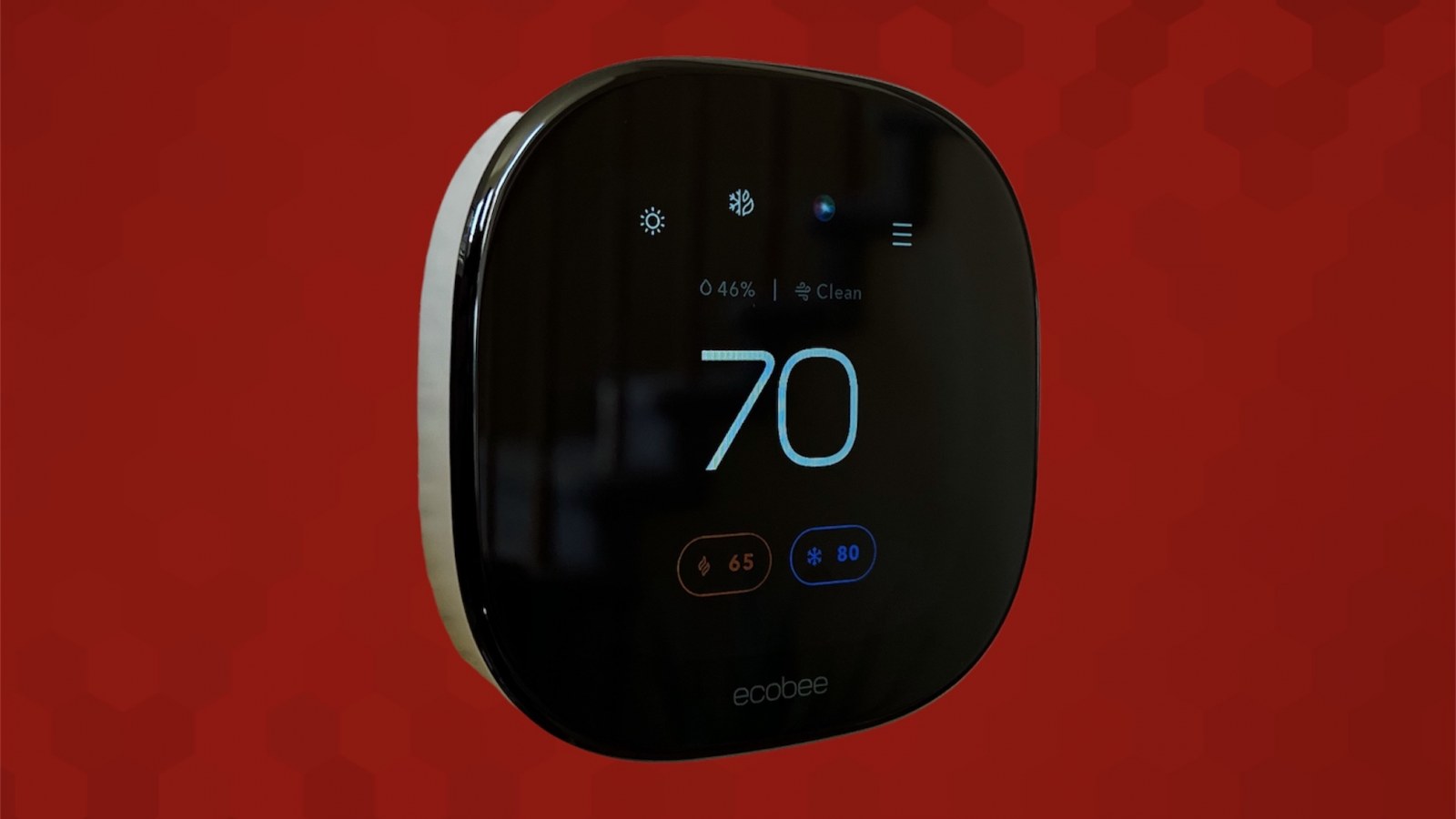Introduction
Welcome to the world of smart speakers, where convenience and accessibility are at the tip of your tongue. These nifty voice-activated devices have become an indispensable part of our daily lives, allowing us to control our homes, fetch information, and even play our favorite tunes with a simple verbal command. However, with great power comes great responsibility, and the vulnerability of these devices to unauthorized access is a growing concern.
In this article, we will explore the various ways in which someone can potentially control your smart speaker without your consent. From unauthorized access to your Wi-Fi network to voice imitation attacks and phishing attempts, we will delve into the tactics used by malicious actors to gain control over your device and access your personal information. But fear not, we will not leave you hanging. We will also discuss the steps you can take to protect your smart speaker and ensure its security.
So, whether you’re a proud owner of a Google Home, Amazon Echo, or Apple HomePod, it’s important to understand the potential risks associated with these devices and how to mitigate them. Let’s dive in and explore how someone can potentially take control of your smart speaker and what you can do to safeguard your privacy and security.
How Do Smart Speakers Work?
Before we delve into the ways someone can control your smart speaker, let’s take a moment to understand how these devices work. At their core, smart speakers are voice-activated virtual assistants that use artificial intelligence (AI) and natural language processing (NLP) technologies to understand and respond to user commands.
When you issue a voice command to your smart speaker, it records the audio and sends it to the cloud, where it is processed and analyzed. The speech recognition algorithms identify the command and convert it into text, which is then matched against a vast database of information and commands. Once the appropriate response is determined, it is sent back to the smart speaker, which then carries out the requested action, whether it’s playing music, answering a question, or controlling connected devices.
Smart speakers rely on an internet connection to communicate with the cloud servers and access the vast array of information available. This is why having a stable Wi-Fi network is crucial for the proper functioning of these devices.
Additionally, smart speakers also use machine learning algorithms to adapt to users’ behavior and preferences over time. They learn from your interactions and can personalize responses based on your usage patterns. This personalized approach adds to the convenience and user experience offered by these devices.
It’s important to note that smart speakers need to be constantly listening in order to detect wake words, such as “Hey Siri” or “Alexa.” This “always-on” feature can raise concerns about privacy, as it means that the device is listening to conversations even when it’s not actively being used. However, rest assured that these devices are designed to only start recording and transmitting audio data after the wake word has been detected, and the recordings are typically encrypted for added security.
Now that we have a better understanding of how smart speakers work, let’s explore the ways in which someone can potentially control these devices without your knowledge or consent, and the measures you can take to prevent such unauthorized access.
Ways Someone Can Control Your Smart Speaker
While smart speakers bring convenience and efficiency to our lives, they can also be susceptible to unauthorized control by malicious actors. Let’s explore the various methods they may employ to gain control over your smart speaker:
- Unauthorized Access to Your Wi-Fi Network: One of the primary ways someone can gain control over your smart speaker is by gaining access to your Wi-Fi network. If your Wi-Fi network has weak security measures or easily guessable passwords, hackers can potentially enter your network and control your smart speaker.
- Voice Imitation Attacks: With advancements in voice synthesis technology, attackers can attempt to mimic your voice and gain control over your smart speaker. By imitating your voice commands, they can manipulate the device to execute actions or gather sensitive information.
- Phishing Attacks: Phishing attacks targeting your smart speaker can trick you into providing sensitive information or granting unauthorized access. These attacks typically involve fraudulent emails, messages, or phone calls that appear to be from trusted sources, prompting you to reveal personal details or login credentials for your smart speaker account.
- Accessing Your Connected Devices: Smart speakers often serve as a hub for controlling other connected devices in your home, such as smart lights, thermostats, or security systems. If someone gains control of your smart speaker, they can potentially manipulate these devices or access data related to them.
It’s important to note that while these methods exist, the likelihood of someone gaining control over your smart speaker is relatively low if you follow good security practices. However, being aware of these potential vulnerabilities can help you take proactive measures to protect your device and ensure your peace of mind.
In the next sections, we will discuss various steps you can take to safeguard your smart speaker’s security and prevent unauthorized access. By implementing these measures, you can enjoy the benefits of your smart speaker while minimizing the risk of an unwanted intrusion.
Unauthorized Access to Your Wi-Fi Network
One of the main entry points for hackers trying to control your smart speaker is through unauthorized access to your Wi-Fi network. Weak security measures or easily guessable passwords can make it easier for malicious actors to infiltrate your network and gain control over your devices.
To protect your Wi-Fi network from unauthorized access and fortify your smart speaker’s security, consider the following steps:
- Change the default administrator password: Smart speakers often have associated mobile apps or web interfaces that allow you to configure settings. Make sure to change the default administrator password to a strong, unique password that is not easily guessable.
- Use a strong Wi-Fi password: Ensure that your Wi-Fi password is strong, consisting of a combination of uppercase and lowercase letters, numbers, and special characters. Avoid using common phrases or easily guessable information.
- Update your router firmware: Regularly check for firmware updates for your Wi-Fi router and install them promptly. These updates often include security patches and bug fixes that can help protect your network from vulnerabilities.
- Enable network encryption: Utilize Wi-Fi Protected Access (WPA2) encryption or the latest available encryption standard supported by your router. This ensures that data transmitted between your devices and the router is encrypted, making it harder for hackers to intercept.
- Enable a guest network: If your router supports it, consider setting up a guest network for visitors. This creates a separate network segment, isolating your smart speaker and other devices from potential threats introduced by visitors’ devices.
By implementing these measures, you significantly reduce the risk of unauthorized access to your Wi-Fi network and protect your smart speaker from potential control by malicious actors. However, bear in mind that Wi-Fi network security is an ongoing effort, so make sure to regularly review and update your security practices.
Voice Imitation Attacks
As technology advances, so do the techniques used by hackers to gain control over your smart speaker. Voice imitation attacks have become a concerning method for unauthorized access.
With advancements in voice synthesis technology, hackers can attempt to mimic your voice and trick your smart speaker into carrying out commands. By imitating your voice, they can manipulate the device to execute actions or gather sensitive information without your knowledge.
To protect your smart speaker from voice imitation attacks, consider the following measures:
- Enable voice recognition: Many smart speakers offer voice recognition features that allow them to recognize and respond to specific authorized voices only. By enabling this feature, you can ensure that only recognized voices can control the device.
- Create a strong wake word: If your smart speaker allows customization of the wake word, choose a unique and uncommon phrase that is not easily imitated. Avoid using common names or easily guessable phrases.
- Use multifactor authentication: Consider enabling multifactor authentication for your smart speaker account. This adds an extra layer of security by requiring additional verification methods, such as a fingerprint or a unique code, to access your account and control the device.
- Regularly review voice command history: Smart speakers often provide the ability to review past voice commands and actions taken by the device. Regularly check the command history for any unfamiliar activities or suspicious entries.
- Limit smart speaker permissions: Review the permissions granted to your smart speaker’s apps or skills. Ensure that only necessary permissions are granted to avoid potential misuse or unauthorized access to sensitive information.
By implementing these measures, you can significantly reduce the risk of falling victim to voice imitation attacks and preserve the security of your smart speaker. Remember to regularly update your device’s firmware to stay protected against emerging threats and vulnerabilities.
Phishing Attacks
In the digital age, phishing attacks have become a prevalent method used by hackers to gain control over your smart speaker and access your personal information. These attacks involve tricking users into revealing sensitive information or granting unauthorized access through fraudulent emails, messages, or phone calls.
To protect yourself from falling victim to phishing attacks and safeguard your smart speaker, consider the following measures:
- Be vigilant of suspicious emails: Exercise caution when receiving emails requesting personal or account information. Be wary of emails that appear to be from trusted sources but have unusual content, spelling errors, or urgent requests for information.
- Avoid clicking suspicious links: Do not click on links or download attachments from unsolicited or suspicious sources. These may lead to fake websites or malware that could compromise your smart speaker’s security.
- Verify the source: If you receive a communication that raises suspicion, independently verify the source by contacting the organization directly through their official website or phone number. Do not use the contact information provided in the suspicious email or message.
- Stay updated with security news: Keep yourself informed about the latest phishing techniques and stay updated with security measures recommended by smart speaker manufacturers. This will help you stay one step ahead of potential phishing attacks.
- Enable two-factor authentication (2FA): Enable 2FA for your smart speaker account, if supported. This adds an extra layer of security by requiring an additional verification step, such as a unique code sent to your smartphone, when logging into your account.
By adopting these preventive measures, you can significantly reduce the risk of falling victim to phishing attacks and protect your smart speaker from unauthorized access. Remember to exercise caution and remain vigilant when dealing with emails, messages, or phone calls requesting personal information.
In the next section, we will explore how someone who gains control over your smart speaker may attempt to access your connected devices and steps you can take to mitigate this risk.
Accessing Your Connected Devices
Smart speakers are often the central control hub for various connected devices in your home, such as smart lights, security cameras, or thermostats. If someone gains control over your smart speaker, they can potentially access and manipulate these connected devices, posing a significant invasion of your privacy and security.
To protect your connected devices and mitigate the risk of unauthorized access, consider the following steps:
- Secure your connected devices individually: Each connected device should have its own strong, unique password. Avoid using default or easily guessable passwords. Regularly update the firmware on your devices to ensure they are equipped with the latest security patches.
- Enable device encryption: If available, enable encryption on your connected devices. This will ensure that the data transmitted between your devices and the smart speaker is encrypted, making it harder for unauthorized individuals to intercept or manipulate the data.
- Enable device-specific authentication: Some smart devices offer device-specific authentication, requiring a unique login or verification process to access them. Enable this feature if available, as it adds an extra layer of security to your connected devices.
- Regularly review device access: Periodically review which devices have access to your smart speaker and connected network. Remove any devices that are no longer in use or that you no longer recognize.
- Utilize device grouping: Group your connected devices based on their function or location and set access restrictions accordingly. This can help enhance security and limit the control that unauthorized users may have over your devices.
By taking these precautions, you can better protect your connected devices and minimize the risk of unauthorized access through your smart speaker. Stay proactive in monitoring and maintaining the security of your connected devices so that you can enjoy the benefits of a smart home without compromising your privacy.
In the next section, we will discuss various measures you can take to protect your smart speaker and ensure its security.
Protecting Your Smart Speaker
Securing your smart speaker is crucial to ensure the privacy and security of your personal information. By implementing the following measures, you can strengthen the protection of your device:
- Set a strong password: Create a strong and unique password for your smart speaker account. Avoid using common passwords or easily guessable information.
- Enable two-factor authentication (2FA): Enable 2FA for your smart speaker account, if available. This adds an extra layer of security by requiring an additional verification step (such as a unique code sent to your smartphone) when accessing your account.
- Regularly update firmware: Check for firmware updates for your smart speaker and install them promptly. These updates often include security patches and bug fixes that help protect your device.
- Review app permissions: Review the permissions granted to apps or skills associated with your smart speaker. Disable or revoke unnecessary permissions to limit potential vulnerabilities.
- Keep your smart speaker software up to date: Check for software updates for your smart speaker and install them to ensure that you have the latest security features and improvements.
- Secure your Wi-Fi network: Implement strong security measures for your Wi-Fi network, including using a strong password, enabling encryption, and regularly updating your router firmware.
- Be cautious of downloading third-party apps or skills: Stick to trusted sources when downloading new apps or skills for your smart speaker. Avoid downloading and installing apps from unknown or unreliable sources.
- Be aware of suspicious activity: Pay attention to any unusual behavior or unexpected responses from your smart speaker. If you suspect unauthorized access, report the issue to the manufacturer’s customer support.
By following these protective measures, you can significantly reduce the risk of unauthorized control over your smart speaker and protect your personal information. Remember that securing your smart speaker is an ongoing effort, so it’s important to stay proactive in implementing and maintaining these security practices.
Now that you’re equipped with the knowledge to protect your smart speaker, you can confidently enjoy the convenience and benefits that it brings while keeping your privacy and security intact.
Password Protection for Wi-Fi Network
Securing your Wi-Fi network is paramount to ensure the protection of your smart speaker and other connected devices. Implementing strong password protection measures can significantly reduce the risk of unauthorized access to your network. Consider the following steps:
- Change the default Wi-Fi password: When setting up your Wi-Fi network, make sure to change the default username and password provided by your internet service provider. Default credentials are often easily accessible and known to potential attackers.
- Create a strong password: Use a complex and unique password for your Wi-Fi network. Include a combination of uppercase and lowercase letters, numbers, and special characters. Avoid using common words or personal information that can be easily guessed.
- Avoid sharing Wi-Fi password: Be cautious about sharing your Wi-Fi password with unauthorized individuals. Only provide the password to trusted individuals who you know and trust.
- Enable WPA2 or WPA3 encryption: Wi-Fi Protected Access versions 2 (WPA2) or 3 (WPA3) provide strong encryption protocols for your Wi-Fi network. Configure your router to use either of these encryption methods to enhance the security of data transmitted over the network.
- Disable Wi-Fi Protected Setup (WPS): WPS is a feature that simplifies the process of connecting devices to a Wi-Fi network. However, it can also be exploited by attackers. Disable WPS on your router to prevent potential vulnerabilities.
- Regularly update router firmware: Check for firmware updates for your Wi-Fi router and install them promptly. These updates often include security patches and bug fixes that help protect your network from known vulnerabilities.
- Segment your network: Separate your devices into different network segments. You can create a separate guest network for visitors, keeping them isolated from your primary network and ensuring that unauthorized users do not have direct access to your smart speaker.
By following these password protection practices, you can significantly enhance the security of your Wi-Fi network and reduce the risk of unauthorized access to your smart speaker. Remember to periodically review and update your password to stay ahead in maintaining a secure network environment.
Now that you have fortified your network, let’s explore additional security measures you can implement to safeguard the accounts associated with your smart speaker.
Using Strong Passwords for Smart Speaker Accounts
Creating strong passwords for your smart speaker accounts is essential to protect your device and the associated personal information. By using robust passwords, you can significantly minimize the risk of unauthorized access. Consider the following tips:
- Create a unique password: Use a different password for your smart speaker account than you use for other accounts. Reusing passwords across multiple accounts can leave you vulnerable to security breaches.
- Make it complex: Use a combination of uppercase and lowercase letters, numbers, and special characters in your password. Avoid common words or easily guessable information, such as your name or birthdate.
- Length matters: Aim for a password length of at least 12 characters. The longer the password, the harder it is for hackers to crack using brute force or guessing methods.
- Avoid personal information: Do not include personal information, such as your name, address, or phone number, in your password. Hackers can readily find this information and use it to guess your password.
- Consider using a password manager: If remembering strong and unique passwords becomes challenging, consider using a password manager that securely stores and generates complex passwords for you.
- Regularly update your password: Change your smart speaker account password periodically, ideally every three to six months. This practice adds an additional layer of security to ensure that even if a password is compromised, it becomes outdated.
- Enable two-factor authentication (2FA): If available, enable 2FA for your smart speaker account. This adds an extra layer of security by requiring an additional verification step, such as a unique code sent to your smartphone, when logging into your account.
By following these guidelines and using strong passwords for your smart speaker accounts, you can significantly enhance the security of your device. Remember, a robust password is one of the first lines of defense in protecting your personal information and maintaining the privacy of your smart speaker.
Now that you’ve fortified your passwords, let’s explore the importance of enabling two-factor authentication for your smart speaker accounts.
Enabling Two-Factor Authentication
Enabling two-factor authentication (2FA) for your smart speaker accounts is an effective way to enhance the security of your device and safeguard your personal information. 2FA adds an extra layer of protection by requiring an additional verification step, typically in the form of a unique code or prompt, when logging into your account. This second authentication factor acts as a safeguard against unauthorized access, even if your password is compromised.
To enable 2FA for your smart speaker accounts, consider the following steps:
- Check if your smart speaker supports 2FA: Visit the official website or check the user manual to determine if your smart speaker supports 2FA. Different manufacturers may have varying methods and terminology for enabling this feature.
- Choose the appropriate 2FA method: Depending on the device, you may have options such as receiving a verification code via SMS, using a dedicated authentication app, or utilizing biometric authentication like fingerprint or facial recognition.
- Follow the setup instructions: Once you have chosen the 2FA method, follow the setup instructions provided by the manufacturer. This may involve linking your smart speaker account to a phone number or installing an authentication app.
- Securely store backup codes: In case you lose access to your primary 2FA device, most services offer backup codes. Save these codes in a secure location, such as a password manager or offline storage, to ensure you can still access your account.
- Regularly review and update your 2FA settings: Periodically check your 2FA settings to ensure they are up to date and aligned with your security preferences. Consider updating your method or re-authenticating devices to maintain a secure setup.
By enabling two-factor authentication, you add an extra layer of security to your smart speaker accounts. Even if an unauthorized person obtains your password, they would still need the secondary authentication factor to access your account and control your device. This significantly reduces the risk of unauthorized control and enhances the overall security of your smart speaker experience.
In the next section, we will discuss the importance of keeping your smart speaker firmware up to date and implementing necessary security patches.
Firmware Updates and Security Patches
Keeping your smart speaker’s firmware up to date and installing necessary security patches is vital in maintaining the security and functionality of your device. Firmware updates often include bug fixes, performance improvements, and most importantly, security enhancements to protect against the latest threats.
To ensure the utmost security for your smart speaker, consider the following guidelines:
- Regularly check for firmware updates: Manufacturers periodically release firmware updates for their smart speakers. Stay informed about these updates by visiting the manufacturer’s website or checking for notifications within the associated app.
- Install updates promptly: Once a firmware update becomes available, install it as soon as possible. Delaying updates can leave your device vulnerable to known security vulnerabilities that may have been addressed in the latest release.
- Enable automatic updates: If your smart speaker offers an option to enable automatic updates, it is best to enable this feature. Automatic updates ensure that your device always has the latest firmware and security patches without requiring manual intervention.
- Stay informed about security bulletins: Subscribe to notifications or newsletters provided by the manufacturer to stay informed about security bulletins and any potential vulnerabilities that may affect your smart speaker. This allows you to stay proactive in protecting your device.
- Keep associated mobile apps up to date: In addition to updating the firmware of your smart speaker, maintain the latest version of the associated mobile app on your smartphone or tablet. App updates often include important security fixes and performance improvements.
- Report any software issues: If you encounter any software issues or vulnerabilities with your smart speaker, promptly report them to the manufacturer’s customer support. This helps the manufacturer address the issues and release appropriate patches or updates.
By regularly updating your smart speaker’s firmware and installing security patches, you ensure that your device remains protected against the latest threats and exploits. This proactive approach helps maintain the integrity and security of your smart speaker and provides a safer environment for your device and personal information.
In the next section, we will discuss ways to stay vigilant and be aware of suspicious activity that may indicate unauthorized control of your smart speaker.
Being Aware of Suspicious Activity
Being vigilant and aware of any suspicious activity related to your smart speaker is crucial in identifying and addressing potential unauthorized control or security breaches. By staying alert and proactive, you can take necessary actions to safeguard your device and personal information. Here are some indicators of suspicious activity to watch out for:
- Unusual behaviors: Pay attention to any unexpected or unusual responses from your smart speaker. If it starts behaving erratically, executing commands without your authorization, or responding to unfamiliar voices, it may indicate unauthorized control.
- Unrecognized voice commands or actions: Review your smart speaker’s command history regularly, paying attention to any unexpected or unrecognized voice commands. If you notice unknown actions being performed or activities that you did not initiate, it may be a sign of unauthorized access.
- Unfamiliar devices connected: Check the list of connected devices associated with your smart speaker. If you notice unfamiliar or unidentified devices connected to your network, it may indicate unauthorized access to your smart speaker or Wi-Fi network.
- Increase in internet or data usage: Monitor your internet or data usage associated with your smart speaker. A sudden and significant increase in data consumption without a corresponding increase in your usage patterns could be an indicator of unauthorized control or activity.
- Disabled or altered security settings: Be alert to any changes in your smart speaker’s security settings. If you discover that security features, such as two-factor authentication, have been unexpectedly disabled or modified, it may indicate unauthorized access.
If you notice any suspicious activity related to your smart speaker, take immediate action to address the issue:
- Disconnect from the internet: If you suspect unauthorized access, temporarily disconnect your smart speaker from the internet to prevent further potential control or data breaches.
- Change passwords: Reset the password for your smart speaker account, as well as your Wi-Fi network, to revoke access to any unauthorized individuals.
- Contact customer support: Report the suspicious activity to the manufacturer’s customer support. They can provide guidance on further actions to secure your device and investigate any potential breaches.
- Scan for malware: Run a malware scan on your connected devices, including your smart speaker, to check for any potential malware that may have contributed to the unauthorized access.
By being aware of suspicious activity and taking swift action, you can protect your smart speaker from unauthorized access and maintain the security of your personal information. Stay vigilant and promptly address any concerns to ensure the continued safety and privacy of your smart speaker.
In the next section, we will wrap up our discussion and summarize the key points to reinforce the importance of protecting your smart speaker.
Conclusion
Securing your smart speaker is essential to protect your privacy and maintain the integrity of your personal information. From unauthorized access to your Wi-Fi network to voice imitation attacks and phishing attempts, it’s important to be aware of the potential risks and take proactive measures to safeguard your device.
In this article, we explored various ways someone can potentially control your smart speaker without your consent. We discussed the importance of password protection for your Wi-Fi network and smart speaker accounts, enabling two-factor authentication, and keeping your devices up to date with firmware updates and security patches.
Additionally, we emphasized the need to be aware of suspicious activity and take prompt action if unauthorized control or security breaches are suspected. By staying vigilant and implementing good security practices, you can minimize the risk of falling victim to these attacks and protect your smart speaker and connected devices.
Remember to change default passwords, use strong and unique passwords, enable two-factor authentication, and regularly update firmware and security patches to keep your smart speaker secure. Stay cautious of phishing attempts, voice imitation attacks, and suspicious activity, being proactive in reporting any concerns to the manufacturer’s customer support.
By following these guidelines and implementing the suggested protective measures, you can enjoy the benefits of your smart speaker while ensuring that your privacy and security are preserved. Stay informed, stay proactive, and enjoy the convenience and peace of mind that your secure smart speaker provides.

























